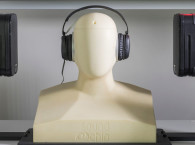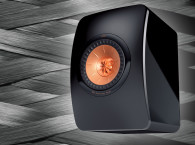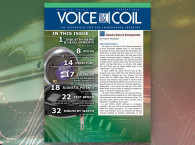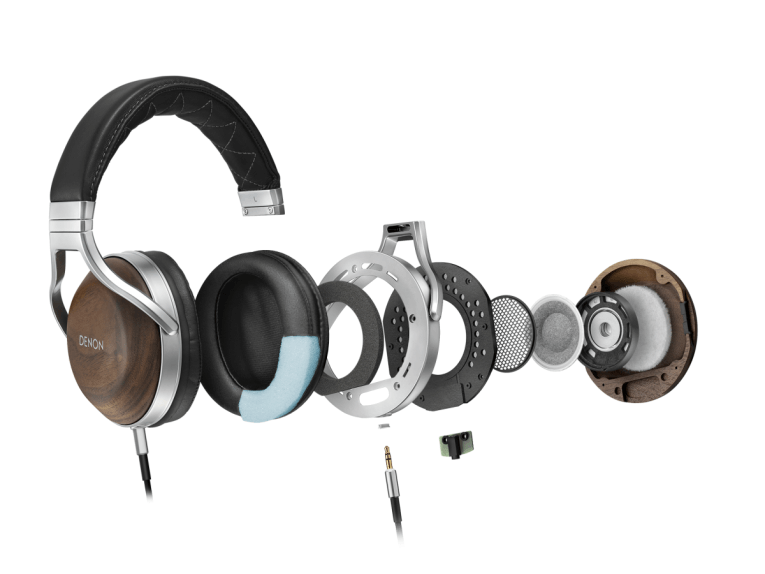
Yet, what could be a more rigorous application than headphones and earphones — with the speaker diaphragm so close to the ear? The passive isolation of earphones and (closed back) headphones in the mid and upper bands is usually 15+ dB, so there is little room for ambient noise to mask driver distortion. And, with all that direct sound and close proximity of the ear to the product, subtle refinements can make a real difference.
Let’s start with the heart of the headphone — the driver. Most earphone and headphone drivers are not much more than commodity designs and all too close a cousin to the buzzer and microspeakers from which they were developed. This should not be a surprise as many offshore headphone manufacturers started out producing buzzers.
Today’s mid- and low-end headphone and earphone drivers are not much to look at. Typically, they consist of an inexpensive combination of marginal magnetic circuit, PET film diaphragms (the stuff of Coke bottles), round relatively chunky gauge copper voice coil wire in a wide voice coil gap — all stuck together on flimsy high-impact styrene (HIPS) or ABS rattling plastic frames. For sure, the diaphragms are a bit too shallow and with much of the radiating surface doubling as the compliance, there is a lot of diaphragm flexing noise.
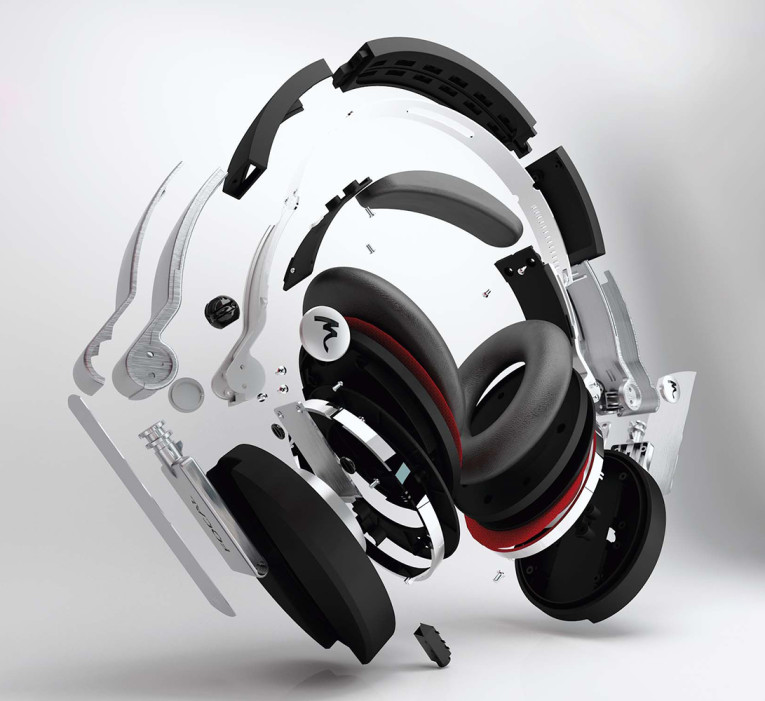
The cost of this stuff is cheap — about $0.60 to $0.70 for a 40 mm diameter headphone driver is the norm — with a more upscale but still garden-variety driver not much more than double the price. Voice coils cost about a dime and PET diaphragms even less. Copper-clad aluminum voice coils have a bit more sensitivity, and at the top-end, the cost is not much more but require best practices in lead-out dress to avoid problems down the line. Pricing escalates quickly for higher-grade film diaphragms such as PEN or PEEK. On the other hand, square voice coil wire or laminated film diaphragms up the Bill of Materials (BOM) even more.
Esoteric Transducer Solutions
What about the superior material options for the highest end of the market? There is Materion’s Truextent Beryllium foil, which is used by Focal in its Utopia headphone diaphragm. Using Beryllium for acoustic components minimizes audible ringing and distortion heard from traditional metal diaphragms (e.g., titanium or aluminum). Beryllium enables an extra octave of useable, non-resonant high-frequency energy—pushing breakup modes beyond the audible band.
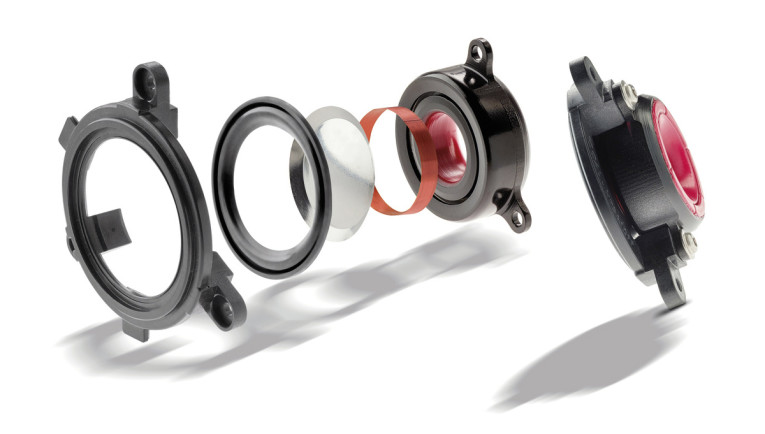
A metal upgrade alternative is magnesium alloy from Nippon Kinzoku (www.nipponkinzoku.co.jp/en), whose alloy foils offer superior transient response and are used in some flagship Japanese earphones and headphones.
TeXtreme, a Swedish carbon fiber fabrication specialist, has developed a unique structure reinforcement technology based on thinply carbon technology, enabling stronger and lighter laminate membranes. Using thin-ply carbon diaphragm technology provides considerable weight savings, greater rigidness, and increased strength. Textreme has fabricated cones and tweeter domes and is in development to apply its unique thin-ply carbon diaphragm technology to headphone diaphragms.
Planar, Electrostatic and Ribbon
Sennheiser’s’ Orpheus, its absolute best headphone at $55,000, is an electrostatic planar along with less expensive models from HiFi Man, Stax, Shure, Sonora, and Koss. Ribbon planars include OPPO, Audeze, and some Fostex models.

The term planar driver generally refers to a flat tensioned diaphragm that is uniformly driven. Ribbon planar headphones are available from very few Asia OEM/ODMs. Dai-ichi Electronics Manufacturing Corp. in Manila is one of the key vendors. It supplies one of the most respected headphone brands, along with professional and theater ribbon line arrays to the movie theater sound system brands (see Photo 4).
Foster has offered ribbon planar headphones on an ODM basis for years and through its Fostex brand. Audeze rolls its own ribbon planar drivers at its California facility. The high cost of the diaphragms and critical manufacturing techniques and tolerances keep ribbon planars in the luxury price range. Electrostatic planar headphones use a metalized film diaphragm tensioned between metal plates. Intrinsically costly, electrostatics require high-voltage power supplies along with the critical manufacturing techniques and tolerances similar to ribbon planars.
Graphene Drivers
Graphene is a form (allotrope is the more precise technical term) of carbon in a two-dimensional, one atom thick film. Graphene is the basic structural element of other allotropes, including graphite, charcoal, and carbon nanotubes. It is more than 200 times stronger than high-strength (high-carbon) steel and efficiently conducts heat and electricity. Carbon materials typically have good acoustical properties.
Exclusively licensed by GraphAudio from UC Lawrence Labs Berkeley, the startup has successfully developed an electrostatic driver in which the graphene diaphragm functions as part of the “motor.” When this field oscillates due to the audio signal, it causes the graphene to vibrate in a physical analogy to the audio electrical signal and this generates sound.
The graphene diaphragms are very thin and light (far thinner than metalized polymer films used in electrostats) with a small spring constant so that the air itself damps its motion. The air-damped graphene converts almost all of its energy into sound and so is potentially extremely efficient. Commercialization is expected in early 2020.

Signal Processing
Acoustic echo cancelation (AEC) and full duplex operation — why am I bringing up signal processing in a materials science article? In engineering, often there are no “silver bullet” solutions and the most effective path is symbiotic and comes together from very different directions. In the last couple of years, too many of my projects have come from new clients needing remedial work searching for quick fixes to audio products that suffer from acoustic feedback or AEC headroom.
These are full duplex products that are prematurely “losing it” as their AEC cannot cope with the system gain in conjunction with distortion and rattles. Related situations occur when spurious resonances in the drivers and product structure interfere with signal processing performance such as active noise cancelation (ANC) headphones with nasty side effects (e.g., a very ragged active noise suppression response).
Let’s look at the “mechanism” of this AEC and ANC system performance issue. Many products from speakerphones and conference phones to over-the-ear Bluetooth are full duplex hands-free — which means the speaker(s) and mic(s) are on simultaneously so, for example, both sides of the line can sing a duet together. The issue is that the voice from the other side coming out of your speakerphone can be picked up by your mic and head back from where it came—along with the delay in the communication channel. We have all experienced this.
The echo cancellation involves first recognizing the originally transmitted signal that re-appears, with some latency, in the transmitted or received signal. Once the echo is recognized, it can be removed by subtracting it from the transmitted or received signal. AEC processors can perhaps knock down the echo 20 dB, the best sometimes more. But this margin is partially eaten by the high Q rattle frequency peaks. The smoother and less resonance the audio path has, the more headroom your AEC will have. For years, the situation has been under control and the design rules adequate, but now hi-res audio (HRA) has wider dynamic range and extended bandwidth, making it more of a challenge.
Nothing like more power and deeper bass tuning to shake up the buzzes and rattles. Bluetooth and other headphone full-duplex handsfree designs can create excessive physical coupling of egg-shell resonance structure-borne vibrations from the driver, transferring to the microphone via the casing. In the case of acoustic feedback between speakers and mics, it is all about gain before feedback. If unity gain is prematurely reached (with these plastic parts buzzing frequencies are the peaks), feedback or AEC failure onset will arrive.
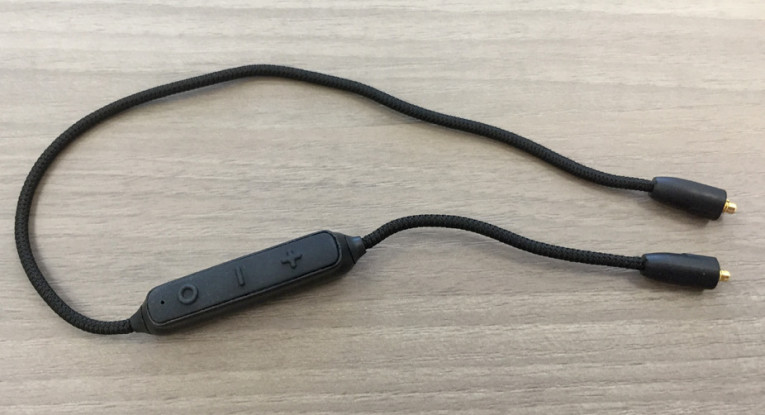
Parts is Parts
Less sexy than drivers are the rest of the components: headbands, ear cups, hinge assemblies, and the like — which “don’t get much respect.” For whatever reason, there is a lack of technical discussion of what headphones or earphones are made of and why this stuff matters... so here we go.
Impact strength is important—headphones get bounced and broken hinges are the biggest failure mode after intermittent cables/connectors. As we discussed in AEC and ANC, earcups can adversely influence sound quality due to resonances. Ribbing inside, thicker walls, and a bit of fuzz behind the driver all help, but also consider better plastics. While metal earcups, especially cast parts, and CNC wood earcups are impressive, they are also heavy. The usual injection-molded ABS or polycarbonate (PC) plastics are commonly used for mid-grade earcups — HIPS for the entry level.
At the high-end of the injection-molded plastics market is Leona from Asahi Kasei, and if this company sounds familiar you may recognize the name for its AKM semiconductor DACs and other high-end audio ICs and its unique Roboden elastic audio cables (see Photo 6). Leona resin’s claim to fame is the components in Sennheiser’s flagship HD 800 headphones. Leona’s properties make it a good candidate for metal replacement in the hinges and headband for headphone weight reduction. A co-polymer in the polyamide 66 nylon family — 60% glass fiber-filled, providing high stiffness for what looks like the Sennheiser’s HD 800 metal parts of the earcups, as well as the internal structure of the driver frame. It also offers superior rigidity, tensile strength, and thermal stability at high temperatures with superior vibration dampening characteristics — and its pricing reflects all these attributes.
On the other side of the world (and at the other end of the price range), the leading global headphone brands are beginning to adopt Eastman Tritan co-polyester. Eastman Chemicals is a global specialty chemicals company with about $9.5 billion revenue in 2017. Eastman Tritan co-polyester, a clear, tough, chemical-resistant polymer found in products made by companies such as Newell, Nalgene, CamelBak, and NuGlass, recently celebrated its 10-year anniversary.
As a high-performance, BPA-Free alternative to other engineering materials like polycarbonate and ABS it already gained wide adoption in markets (e.g., Appliances and Housewares). But its unique attributes, including good flex fatigue performance and sound damping characteristics, are leading more and more companies to use it in consumer electronics applications. It’s especially suited for headband applications in over-the-head headphones (see Photo 5).
Yet even more intriguing is Eastman Trēva, a bio-based engineering thermoplastic. Trēva uses cellulose derived from sustainably harvested trees. There are several grades of Trēva that are actually certified by USDA to have bio-content between 42% and 45%. Trēva offers both high-performance and a reduced environmental impact. Trēva is chemically resistant and dimensionally stable and has excellent flow and the cellulose confers superior acoustic damping properties.

Headbands and Ear Cushions
Typically made from Nylon 12 injection molded over a spring steel strip, headbands have to withstand extreme bending, have high impact strength, and not be prone to “creep” (i.e., not have their shape compromised over time). Eastman’s Tritan has made inroads at a fraction of the cost of Nylon 12, and now there is a new cross-ply carbon fiber thermoplastic soon to be introduced to the supply chain that is tougher, thinner and lighter than Nylon 12 — stay tuned!
Hot ears, extraneous noise, resonance, and related distractions all contribute to listening fatigue. The earphone and headband cushions dominate the wearer’s tactile impression of a headphone. Comfort is a combination of the weight of the headphone, the clamping force, the area where the cushions and headband contact the head, the ability to adjust the headphone to the user’s head, and heat dissipation. All these factors are balanced and considered to varying degrees— at least by the more experienced headphone designers.
Perhaps the most important aspect that remains unaddressed is that the brain runs hot and this heat is released at least partially through the ear canals. When this heat path is blocked, as with a headphone, the temperature of the ear canal rises over time causing the “wax” (cerumen) formed in the outer ear canal to break down in viscosity. Ear canals blocked by earphones or headphones can become sticky, itchy, and uncomfortable.
To combat heat and moisture in headphones, BASF has introduced a “no-sweat” super-absorbent material called BASF Luquafleece. When used for headphone cushions, it soaks up moisture, and also absorbs the heat. When the headphones are removed, the moisture (and heat) is quickly released.
Luquafleece is placed on the inside of the ear cushion donut and an open-weave breathable fabric is used (on the inside of the donut). Dekoni Audio has announced a line of premium ear cushions featuring Luquafleece for both OEM and aftermarket distribution. With the leading headphone manufacturers currently experimenting with Luquafleece and other new materials, expect many brands to feature more comfortable headphones for their next-generation models.
Cables
Even the way the cable attaches on loosely clamped headphones can have a significant impact on bass response between channels. In headphones where the cable attaches to only one earcup can result in that side being torqued away from a tight fit and reduce bass coupling to that listener’s ear. When the cable is split-attached to both earcups and connected in a “Y,” this approach tends to have less impact on the response between channels. An innovative solution to the “torqueing cable” earcup problem while maintaining the more elegant and ergonomic single earcup to the cable approach is to use an elastic cable. Asahi Kasei developed Roboden TR stretch non-tangling wire for robots and now offers its Ti series for audio and USB. Aside from its elasticity, Roboden has very low microphonics (body pickup noise).
There is no shortage of innovations in the pipeline and at least for headphones and earphones “change is here to stay.” VC

This article was originally published in Voice Coil, January 2019.




